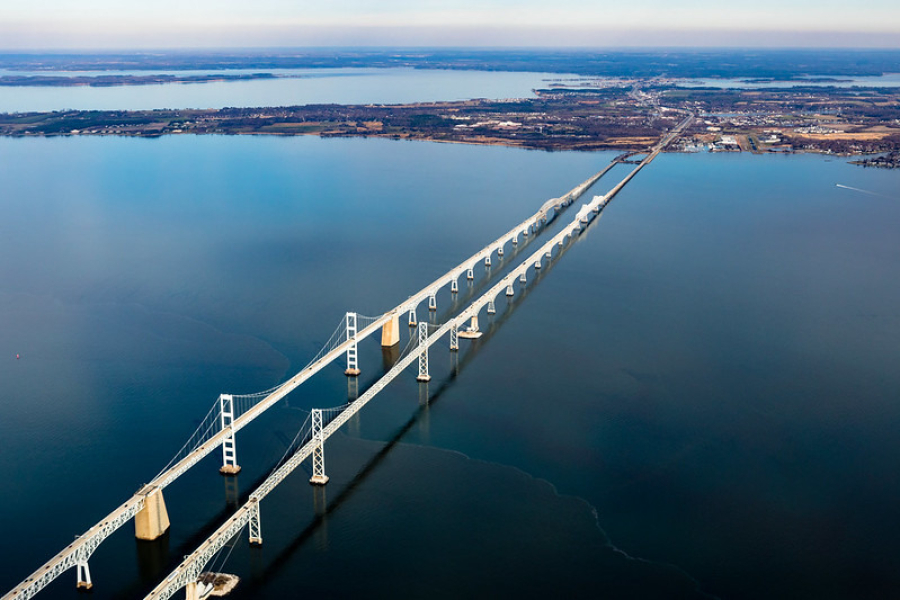Planning for 2025 and Beyond
The Chesapeake Bay Program charts a course for the future of Bay restoration

When the Chesapeake Bay Watershed Agreement was signed in 2014, many of its goals and outcomes had a target deadline of December 2025. As this date draws near, the Chesapeake Bay Program is determining how best to meet these goals and outcomes while planning for the future of Bay restoration. Phase 1 of this effort produced a Beyond 2025 Report that was presented to the Chesapeake Executive Council in December 2024. During Phase 2, the partnership will revise the Watershed Agreement and develop a simplified and streamlined structure and process that supports all partners as they work toward achieving their commitments in an effective, efficient and inclusive manner.
Phase 1: Developing the Beyond 2025 Report
The Beyond 2025 Report
In October 2024, the Beyond 2025 Steering Committee finalized a report that outlined the next steps for meeting the goals and outcomes of the current Watershed Agreement, how best to address and integrate new science and restoration strategies, and plan for the future of the partnership. At a high level, the Beyond 2025 Report made the following recommendations:
- The Chesapeake Executive Council should affirm its continued commitment to meeting the goals of the Chesapeake Bay Watershed Agreement and direct the Principals’ Staff Committee to propose the necessary amendments to effectively implement the Watershed Agreement.
- The Chesapeake Bay Program should be strengthened by identifying ways to simplify and streamline the partnership’s structure and processes, including potential changes to the partnership’s Governance and Management Framework to ensure that commitments can be met.
The report also identified several additional recommendations for improving the Chesapeake Bay Program's efforts in the areas of science, conservation and restoration, and partnership.
Who contributed to the report?
The Beyond 2025 Report was drafted by the Beyond 2025 Steering Committee, which consisted of representatives from each of the six watershed states (Delaware, Maryland, New York, Pennsylvania, Virginia and West Virginia), the District of Columbia, the federal agencies participating in the Chesapeake Bay Program, Goal Implementation Teams, advisory committees and non-profit organizations. The report’s recommendations were informed by an independent evaluation of the partnership conducted by an outside contractor and a series of proposals developed by five groups of subject matter experts representing critical topic areas: Clean Water, Climate Change, Healthy Watersheds, People and Shallow Water Habitats.
Public comments
A draft of the Beyond 2025 Report was open to public comment from July 1, 2024 through August 30, 2024. The report received 87 unique comments along with several letters signed by over a thousand people. These comments and a redlined, edited version of the report based on the comments have been published.
Phase 2: Revising the Watershed Agreement and restructuring the partnership
Executive Council charge
In December 2024, the Chesapeake Executive Council charged the Principals’ Staff Committee with revising the 2014 Chesapeake Bay Watershed Agreement by December 31, 2025. Additionally, the Principals’ Staff Committee was charged with developing a simplified and streamlined structure and process for the partnership. Recommendations for the updated structure and process will be developed by December 1, 2025, and incorporated into the Chesapeake Bay Program’s governance framework by June 2026.
Chesapeake Executive Council Charge to the PSC: Charting a Course Beyond 2025
Timeline
The Principals’ Staff Committee and Management Board have developed a timeline for executing Beyond 2025: Phase 2 activities. Meetings have been scheduled at key milestones. Additional details, meetings and/or milestones will be added to this timeline as they are identified.
Process for Implementing the Charge to Chart a Course Beyond 2025
Outcome review and development
To inform revisions to the Watershed Agreement, the Chesapeake Bay Program has modified its Strategy Review System: During the second year of the 2024-2025 SRS Cycle, Goal Implementation Teams and Workgroups will replace the standard SRS documentation with information that will help the Management Board determine the preferred disposition of each of the Watershed Agreement’s outcomes (e.g., consolidate, update, remove, replace, etc.). The Management Board refers to this information as answering the “Big Question.”
Guidance for answering the Big Question has been provided in Modified Strategy Review System: Phase 2 Outcome Review Methodology. GITs and Workgroups will host their own public meetings to discuss the Big Question with group members and stakeholders. Modified Outcome Review Documents will be posted to ChesapeakeDecisions as they become available and will be discussed at a series of Management Board meetings in February and March 2025.
Modified Strategy Review System: Phase 2 Outcome Review Methodology
GIT and Workgroup Big Question Discussion Schedule As of Dec. 18, 2024
Management Board Outcome Review Meeting Schedule As of Dec. 12, 2024
Outcome Review Meeting Framework and Decision-making Process
Outcome Review Meeting Framework Presentation
Modified Outcome Review Templates and Submissions
Framework for Novel Outcome Proposals
Management Board Outcome Disposition Consensus Results
Outcome Review Summaries
March 13 Outcome Review Summary
Public Comments
Each of the Management Board's outcome review meetings included time for an open dialogue between Management Board members, Chesapeake Bay Program partners and members of the public, who were invited to ask questions or submit comments on the materials that were discussed. The public were also invited to submit comments via email. The comments received have been published here.
Public Comments to the Chesapeake Bay Program (Updated March 2025)
Synthesis of Public Feedback (Updated March 2025)
Priority project submissions
To align the Beyond 2025 Steering Committee’s recommendations with the Chesapeake Bay Program’s long-term goals, the Management Board has asked Goal Implementation Teams and Workgroups to translate these recommendations into separate projects that will advance their focus areas. The Management Board discussed the project proposals that were submitted by GITs and Workgroups at their January 16, 2025, meeting. The Management Board will consider these projects a draft list and expects additional projects to be identified and reviewed over time.
